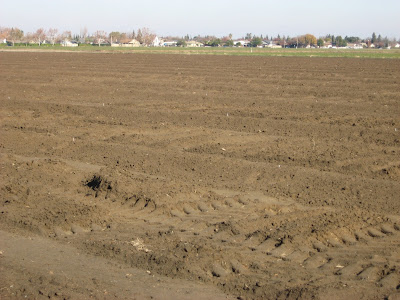We have succeeded in "beating the rain" and all the work that might have been delayed by rain is done.
Carpenter - A weed strip spray is applied, replant sites have been backhoed, the pruning is finished and the brush has been chipped. All that remains for the near future is to fumigate the replant sites.
Whitmore - Ground preparation is completed, including ripping, leveling, fumigation, putting up the berms and marking the tree sites. The only remaining task to be done before planting is to install the irrigation system.
Laser leveling tripod:
Carpenter - A weed strip spray is applied, replant sites have been backhoed, the pruning is finished and the brush has been chipped. All that remains for the near future is to fumigate the replant sites.
Whitmore - Ground preparation is completed, including ripping, leveling, fumigation, putting up the berms and marking the tree sites. The only remaining task to be done before planting is to install the irrigation system.
Cleaning up inter-row space - Carpenter ranch:
Clean row middles:
Whitmore ranch:
Laser leveling tripod:



















































.JPG)